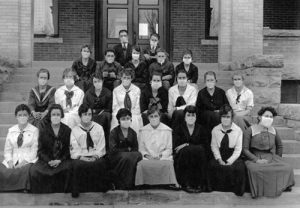
This year marks the 100th anniversary of the great Spanish influenza pandemic that claimed the lives of an estimated 50 million people worldwide — more people than died in combat in both World Wars combined. I have several relatives who died of the 1918 flu, and you probably do, too.
Despite the name, the influenza didn’t start in Spain, but rather began its deadly spread very near Colorado, on the farms of Kansas near the Kansas-Oklahoma-Colorado border. Scientists and historians believe that the influenza originated from swine in the hog farms of Kansas. The hogs may have picked up the flu from migrating birds, according to researchers at the Smithsonian. The bird flu wasn’t spreadable to humans, but when it infected the hogs it changed enough genetically that it was able to spread to people.
Given the deadly flu’s origins so close to the Colorado border, our state was hit hard. The first Colorado cases were reported in September. Then, several thousand Coloradans died of the flu in just the three months between October and December of 1918, according to an essay by Stephen Leonard in the 1989 edition of Essays and Monographs in Colorado History, which you can check out from our library. In total, over 49,000 Coloradans, out of a total state population of 906,000, became infected with the flu.
Some of Colorado’s first cases of the 1918 flu were at the University of Colorado in Boulder, which set up quarantines in fraternity houses. You can read about the University of Colorado Medical School’s response to the pandemic in The University of Colorado School of Medicine: A Centennial History, available for checkout from our library. Other Colorado cases spread through the army camps and among civilians who had traveled outside the state to locations where the flu was widespread. Denver, Colorado Springs, Pueblo, and other cities ordered schools, churches, theaters, and other public gathering places to close temporarily, and many outdoor public gatherings were banned. Even some trains required all passengers to wear masks. One Coloradan who nearly died of the flu was Katherine Anne Porter, a Rocky Mountain News columnist. She would go on to write Pale Horse, Pale Rider, arguably the most famous novel written about the Spanish flu.
The flu spread so quickly and so widely around the world in large part because of the Great War. American soldiers brought it to Europe, where, it is believed, the strain may have mutated. Then, when the war ended, the soldiers brought the mutated strain back to America. Estimates for the numbers of persons infected and killed by the Spanish influenza are difficult to determine because for many sufferers, if the flu itself didn’t kill them, it turned into pneumonia. Therefore many death certificates list pneumonia as cause of death when in actuality the pneumonia was brought on by the flu. Estimates suggest, however, that the pandemic caused the death of at least 8,000 Coloradans, over 675,000 people across America, and 20 to 50 million worldwide. The 1918 flu remains one of the deadliest disease outbreaks in recorded history.
- How to Spot the Differences Between Eagles and Hawks - August 16, 2021
- How Transportation Projects Help Tell the Story of Colorado’s Past - August 9, 2021
- Time Machine Tuesday: The Night the Castlewood Canyon Dam Gave Way - August 3, 2021